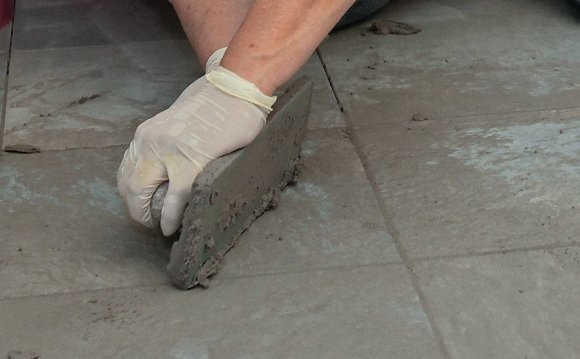
There are three standard types of grout readily available for your tile set up. These are generally:
- Non-Sanded (also known as Unsanded)
- Sanded
- Epoxy
Choosing the proper grout for the certain installation can not only get the job done precisely, it will also cut down on maintenance. Correctly put in and sealed grout lasts when it comes to lifetime of your tile. So which to use so when?
Non-Sanded (or Unsanded) Grout
Unsanded grout is created specifically for grout lines smaller compared to 1/8 inch-wide. This is certainly a broad rule. I Personally Use unsanded grout only in tile with grout lines smaller than 1/16″. Unsanded grout (all grout to different levels) will shrink because cures. The cause of only using it in smaller grout lines may be the broader the grout outlines, the more grout can be used to fill them. The greater amount of grout you have got, the more it's going to shrink. If you attempt to fill grout lines that are too-large the grout will shrink enough to distance themself through the edges of this tile.
Unsanded grout is easier to work with, specifically on vertical surfaces like a bath wall, because it is “stickier” compared to sanded variety. You'll distribute it on the wall surface and it will stick here although you push it in to the grout outlines. Additionally it is easier on fingers than sanded. Even though it now is easier to work well with, you need to make sure that the program that you are using its proper.
Sanded Grout
Sanded Grout is employed for just about any dimensions grout lines 1/8″ and wider. Even though the specs state unsanded grout be applied in grout outlines which are precisely 1/8″, you really should use sanded for all of them. It will guarantee correct adhesion towards tile and guard against too-much shrinkage. No, not Seinfeld shrinkage, grout shrinking.
Sanded grout has actually mud included with it. This prevents the grout from shrinking a lot of because cures. That’s the reason why its useful for bigger grout outlines and should be applied in the most common of tile installations.
When you yourself have a polished stone such granite, marble, limestone, plus some polished travertine, you should be cautious about utilizing sanded grout. While sanded could be the correct option for how big grout outlines, may possibly not be the ideal choice. Based upon the polish of the stone the sand inside grout might actually scratch it. If you decide to use sanded be sure you test that in an inconspicuous location initially to make certain it won't damage your finish. Or use epoxy which will be a better option anyway.
Epoxy Grout
Epoxy grout may be the top of the line and greatest choice for any tile application. It may be substituted for sanded or unsanded grout. It is more sturdy than both as well as becoming waterproof and tarnish resistant.
Epoxy is a-two or three-part chemical composed of the beds base as well as the activator. With some companies colour is another component that really must be added. When the parts are blended a chemical effect begins. From the period, according to the model of epoxy, you've got just a limited length of time getting every thing grouted before the grout becomes rigid adequate to be unworkable. When it hits the period, if you do not have every little thing grouted you are SOL.
To help slow the remedy time you'll combine your epoxy after that put half of it in the freezer. The cold environment will slow the chemical effect and lengthen the performing time. Then you can use one other half until it's all used. Cleanse it, wipe every thing down, after that grab the second one half from the freezer and finish off. When you pull it for the fridge it will be, well, frozen. It thaws quickly, though, therefore should-be workable within minutes. This basically doubles the doing work period of your grout and guarantees you don’t have to hurry through it.
Since most epoxy grouts try not to contain sand (or at the very least maybe not in the classic feeling of sand) it will typically perhaps not scrape your tile. For those who have highly polished granite or marble that’s important. Make sure you test first anyhow!
Various brands of epoxy have actually various working times in addition to some being harder to work with than the others. The brand with that I have had the essential luck together with only brand I ever before use is SpectraLOCK from Laticrete. This has a longer working time than just about any other epoxy grout (at the very least any I’ve ever utilized) and is practically stain evidence. Kindly don’t take that to suggest the you can easily grout a jacuzzi with-it, fill it with cherry kool-aid, and anticipate it never to be pink (Don’t accomplish that). It simply ensures that for all intents and reasons it won't stain without concerted effort. I think it will be the best on the market.
Truly the only disadvantage of epoxy grout is the price. It's relatively high priced. Whenever weighed contrary to the upside, but is worth it. Zero-maintenance demands and large toughness of epoxy grout make it definitely worth the money.
Selecting the right grout for the application is a key part of a proper tile set up. In the event that you choose incorrectly you might get numerous dilemmas and headaches. Grout, opted for and set up precisely, will complete your tile set up and drive it from a good tile work to a great one. Don't undervalue the power of the grout.










